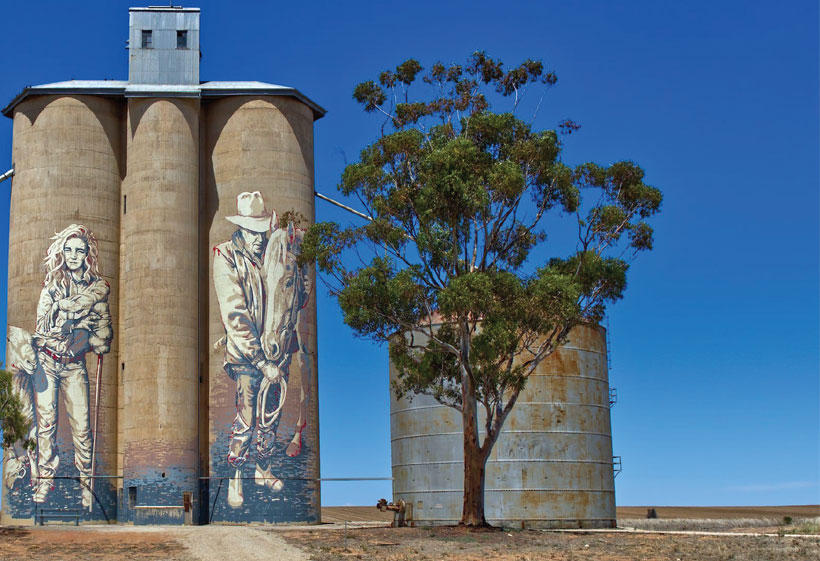You can’t polish a silo… but painting might work
Originally Published: Packaging News, November-December 2021, by Paul Allen
Agricultural and organisational silos share a long history in Australia. Both evolved simultaneously last century, and each is now fighting for survival. However, only one is worth saving, writes Paul Allen.
Australia’s biggest grain handler, GrainCorp, has 170 fully operation silos and roughly the same amount standing idle. These bland concrete structures are typically between 60-100 years old and were thought to have few alternative uses. That is, until the first official silo mural appeared in Western Australia in 2015, when Phlegm and HENSE painted one in Northam and ‘silo-art’ was born. Today there are some 50 painted silos, with the number likely to grow in 2022. Regional leaders say the murals do a lot for their towns, not just through tourism, but through a heightened sense of general wellbeing and local pride. It’s a story of hope.
Unfortunately, the same cannot be said for business silos. Australia has over 2.4 million active trading businesses and experts believe that over 75 per cent are hindered in some material way by internal silos. Deconstruction has been attempted by countless HR and organisational design professionals. Few have succeeded, so their presence remains, and no amount of paint or polish can hide them.
These business silos are complex and costly to the bottom line. Typically, they are built around functions that should in theory be working together but are more likely competing. Can you see them? Are they real? Surely not? But ask your industry colleagues. Question your largest clients about what it’s like inside their organisations. They exist alright; if you’re reading this, you’ve probably got them in your business as well.
So, what to do?
I offer one proven solution based on the irrefutable fact that the only function in an organisation with individual customer key performance indicators (KPIs) is the sales function. This leads to a fragmentation of purpose and accountability between functions, and ultimately the establishment of silos.
The fix is simple. You take a selection of functional staff from sales, operations, logistics, planning and so on, and put them in a room for a day. You equip them with coffee, calculators, whiteboards, and your largest client supply agreement – no paint or polish required. Their brief is to determine from the agreement the ten most essential clauses or obligations that should be known, adhered to, and reported on regularly, to improve commercial outcomes for customer and supplier alike. A further condition is that each staffer must take ownership for the ongoing performance of at least one of the 10 clauses. Thereafter, they report monthly as a team on the commercial outcomes.
The remarkable thing about this process is that the breaking down of silos within a business delivers not only improved margins, but just like in regional communities, a heightened sense of unity, wellbeing and, ultimately, pride.
ABOVE: On the Art Silo Trail, Rosebery, Victoria, December 2020. (Photo by René Riegal on Unsplash).



